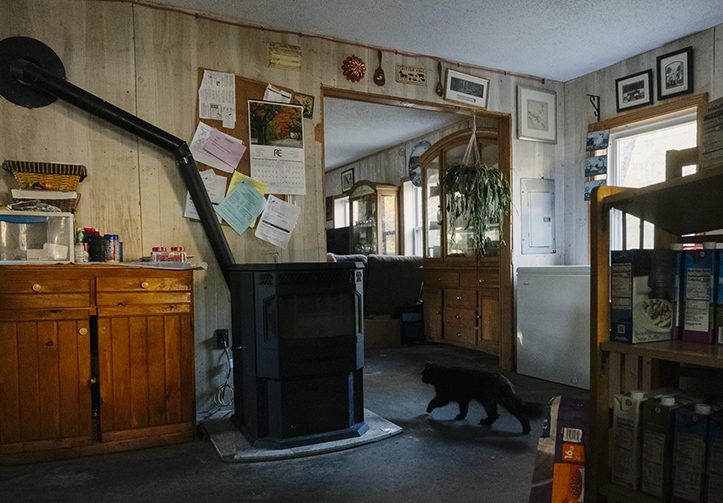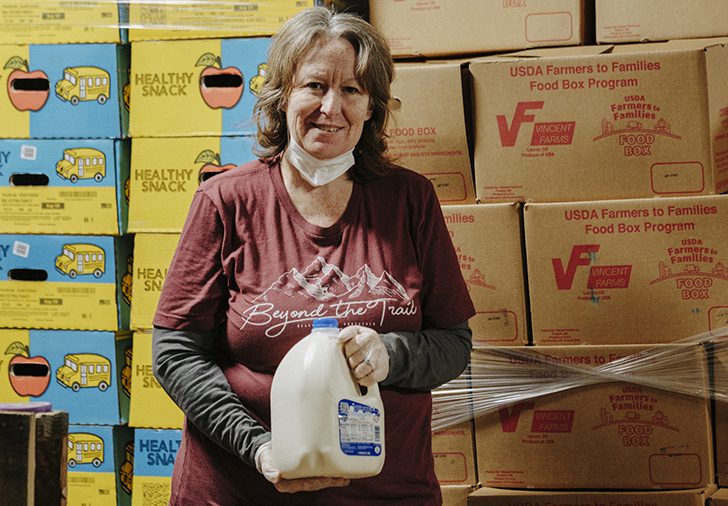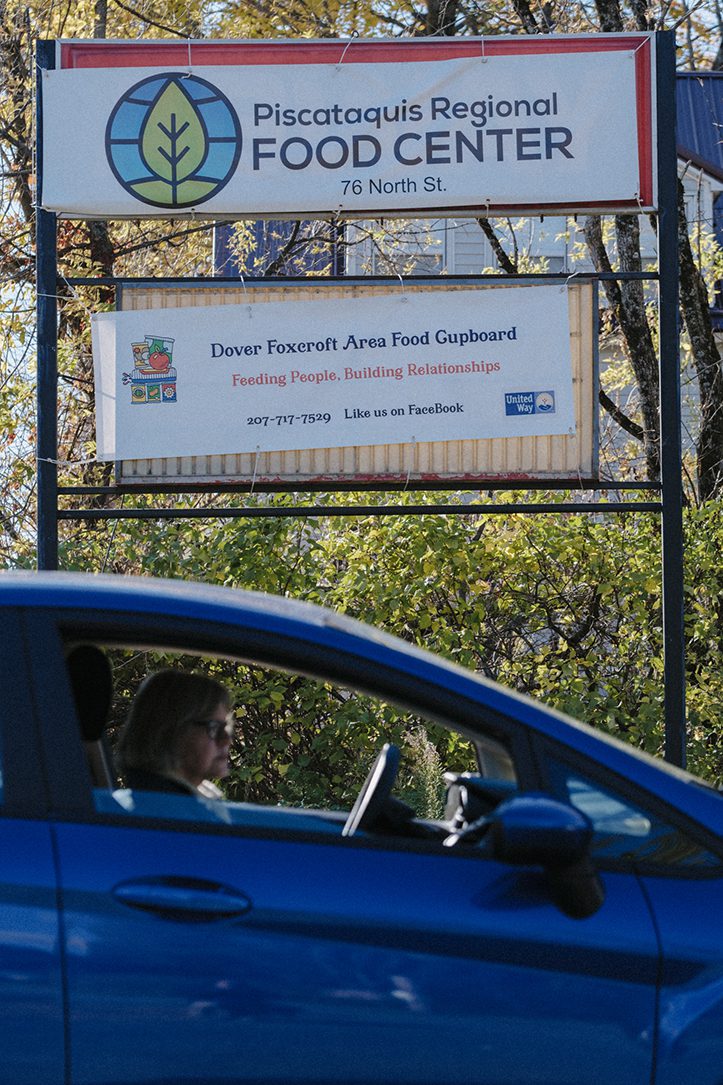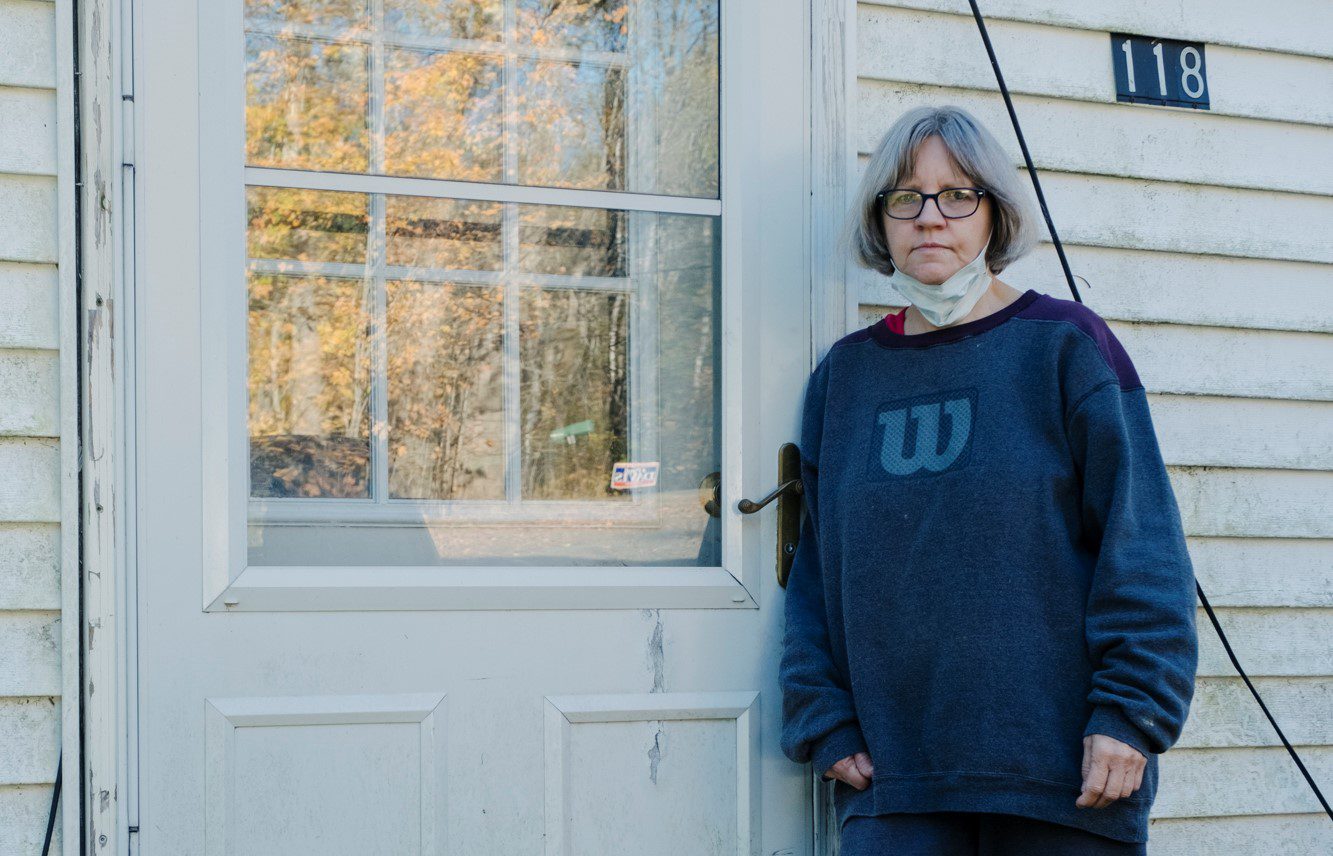On a night in early October when the temperature dropped into the 30s, Rebecca Packard used the last of her heating pellets to keep her Sangerville home warm.
Packard expects to receive fuel assistance in January, but her heating supply until then is dangerously low: three 50-pound bags of pellets and a small pile of firewood. If she gets approved for a month’s worth of emergency pellets in November, Packard will still have just four days worth of heat for all of December.
With winter closing in, Mainers like Packard are calculating what they may need to sacrifice to keep their homes warm at a time when people are struggling financially due to the COVID-19 pandemic and related business closures.

Packard, 62, is retired and on Social Security; the pandemic did not change her fixed income. But in a year of vast unemployment nationwide, Packard worries that if demand for fuel assistance increases, it could diminish the benefit she receives.
“That means that what little money I have for the month will have to go to buy (heating) pellets,” Packard said. “Then I wouldn’t have extra money for what I need.”
Fewer people have applied for heating assistance compared to this point last year, according to MaineHousing data, but officials said the need may not match the numbers.
Packard is on a cardiac diet to limit her salt and cholesterol intake after open heart surgery last year. Some items she has to eat are more expensive. The $16 she typically gets each month on food stamps barely covers a gallon of milk, some bread and a box or two of cereal.
With additional food from the Dover-Foxcroft Food Cupboard every two weeks, and the federal expansion of food stamps during the pandemic, Packard said she has enough to get by. But if the aid shrinks, she doesn’t know what else she could give up to pay for heat.
“They say in your golden years you’re supposed to have a good life, but I bet a lot of people aren’t right now,” Packard said. “I just take it day by day, anyways. That’s all you really can do, I guess.”
Keeping warm in winter
Each winter, Packard receives a financial boost from the federal Low Income Home Energy Assistance Program (LIHEAP) to help cover some heating costs.
Packard’s annual interview for the program is scheduled for early December, but the paperwork takes weeks to process so she won’t see assistance until January. At that point she expects to receive three tons of pellets, which she says will last through the winter. She’s on her own through December.

MaineHousing, which runs the heating assistance program, encourages people to plan ahead and apply early because the process can take time, said spokeswoman Cara Courchesne. But there are a lot of people seeking help this year for the first time.
On Friday, Maine received $36.3 million of federal aid for the heating assistance program as part of a $3.4 billion infusion of funds to LIHEAP nationally. Part of Maine’s allocation — $1.3 million — will go to its tribes and tribal organizations.
There isn’t enough funding to cover all heating costs for applicants so the aid is intended as a supplement, Courchesne said. Emergency fuel assistance is available for people whose heating systems break down or who have no more than three days worth of fuel remaining.
RELATED: Preparing for a cold, hungry winter
There’s also been some recent good news for the 60 percent of Mainers who, unlike Packard, use heating oil. Prices reached a 16-year low, excluding a sudden global collapse in 2016. The U.S. Energy Information Association projects households that use heating oil will spend 10 percent less on energy this year compared to last year. Households that use natural gas or electricity will likely spend about the same and households using propane will spend 14 percent more.
Nonetheless, Piscataquis County residents could face difficult decisions this winter between paying for food, heat or medications, according to April Sargent, program manager with Penquis — a poverty-fighting nonprofit — and president of the Dover-Foxcroft Food Cupboard.
“We are one of the poorest counties in the state of Maine and we’ve always seen people having to make those decisions,” she said. “But now they’re going to have to be making those decisions while having less money themselves.”
Demand at food cupboard grows
By the time Packard got in line at 8:45 a.m. for a Dover-Foxcroft Area Food Cupboard distribution event, the temperature had started to warm into the 40s. She parked behind about 20 other cars and settled in to wait for the line to start moving at 10 a.m.
The food cupboard regularly served about 80 households during distribution events before the pandemic. On Oct. 9, volunteers served 155 households, including 40 first-timers. Two weeks later, the number rose to 171.
The pantry has served 413 individual households this year. Last year at this point, it had served 252 — a 64 percent increase. The number of recipients over age 60 nearly quadrupled from 59 last year to 220.

“A lot of people, in the conversations they have with us, the first thing they say is, ‘I didn’t think I’d ever have to be in a food cupboard line,’ ” said the operations manager, Karen King.
As Packard waited in line, King and other volunteers were preparing a mix of produce, frozen meat and nonperishable items. Volunteering at the food cupboard has become almost a full-time job for King, who goes grocery shopping three times a week to keep up with the demand.
Piscataquis County already had the highest rate of hunger in the state before the coronavirus, with 18 percent of its population food insecure, according to Good Shepherd Food Bank. And that was expected to increase 28 percent this year.
“Winter is such a hard time around here for people,” King said. “Without (COVID-19) and without cuts, usually by November and December we have a jump. But these jumps are early.”
RELATED: Farming helps reduce food insecurity among Somali Bantu community in Lewiston-Auburn
Donations have nearly doubled during the pandemic. The pantry has received increased support from individuals, businesses, local farmers, organizations like Good Shepherd Food Bank and the town of Dover Foxcroft.
One donation in particular stands out for King: two snack baggies full of dimes and nickels she found in the donation mailbox a few months ago.
“They seemed like they had just been dug up: They were old and beat up,” King said. “I told the board we’re going to keep these as a reminder of how amazing people are. That’s amazing to donate your dimes and nickels to the food cupboard.”
Sargent said the support has been “humbling,” but she worries how long the community can maintain it.
‘I do what I can with whatever money I’ve got’
The food pantry is an important resource for Packard, who had to stop working in 2016 due to a knee injury. She was fine with that, she said, because it gave her more time to take care of her husband, who had congestive heart failure and was on kidney dialysis. Packard started going to food banks around then. Her husband died later that year.

Packard doesn’t mind the solitude. She wakes up at 5:30 a.m., feeds her 10 cats, cleans her home, then goes on walks throughout her 13-acre property. She didn’t plan to have so many cats, but her son asked her to save six kittens that were going to be put down. Now they cuddle with her in bed and keep her warm on winter nights. Packard spends $45 on cat food each month, but that is among the items she may need to give up to heat her home.
“I do what I can with whatever money I’ve got,” she said. “If I know what I’m going to do and I need extra money for something, I’ll go without before I do that.”
Packard recently returned her washing machine to the rental company so she could buy a car. Now she washes her clothes at a laundromat and dries them at home.
Her 35-year-old son sometimes lives with her but doesn’t work. If he did, it would help their heating situation but he chooses not to, Packard said. Her mild temperament takes on an edge of annoyance when she explains her son just doesn’t want to work and hasn’t for years. But even then, she eventually shrugs it off. Packard has a common refrain: “I’m content with what I have.”
That doesn’t mean a little help would be unwelcome. Packard said another federal relief package, like the CARES Act passed this spring by Congress, would make a big difference. If she received another check for $1,200, she could purchase two tons of pellets that would last her until January. But negotiations in Congress deadlocked leading up to the election.
For now, Packard is worrying about what she can control. She’ll put up plastic around a window for extra insulation, ask her son to help cut old wood on her property for firewood and continue canning the vegetables she gets from the food bank.
She tries not to think about whether it could be a hard winter.
“Every winter is different. You never know what one winter’s going to be and what one’s not going to be,” she said. “A lot of people think it will be cold, and it might be. Who knows? I’ve still got a few things I’ve got to do. I’ve got one more window to do and I’ve got to get a few more things done, and go from there. What more can I do?”







